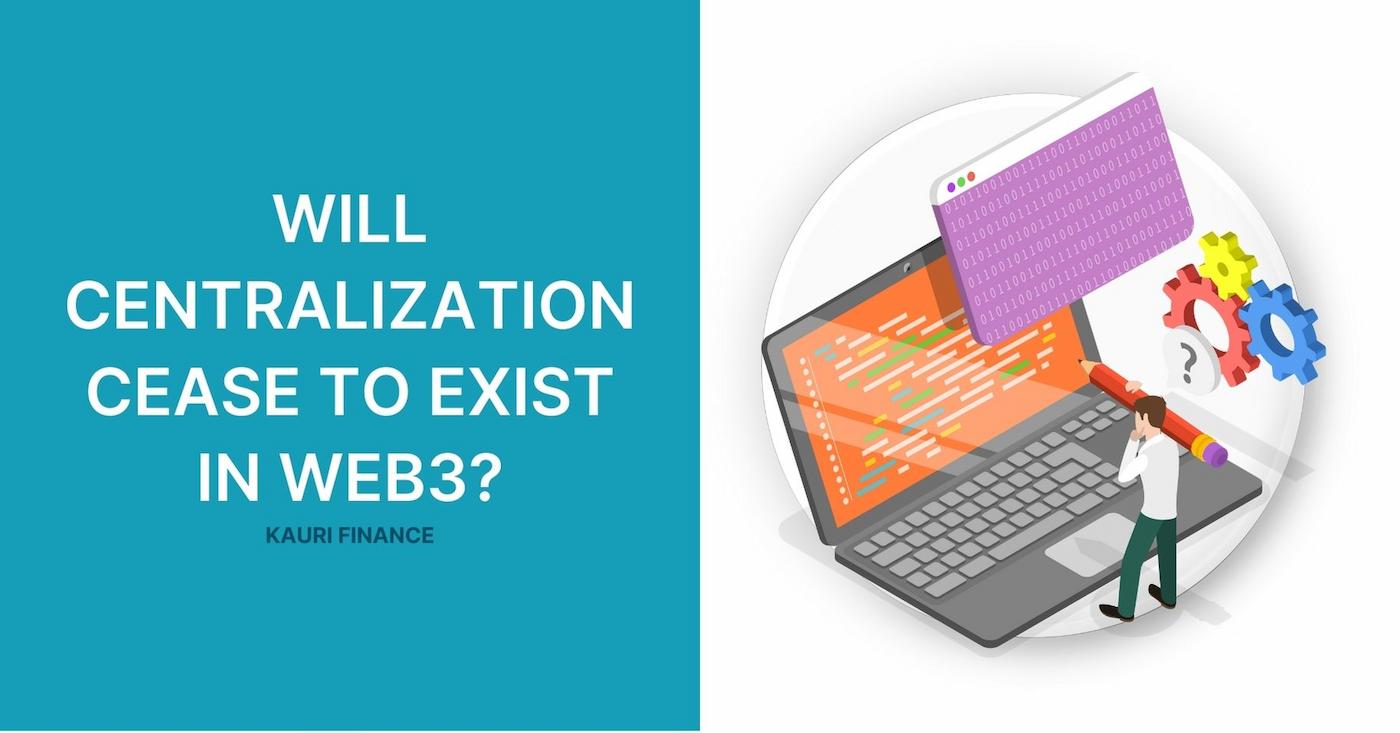
Will Centralized Institutions Disappear in Web3?

Moving from Web2 to Web3 marks a revolutionary shift towards decentralization, eliminating the need for intermediaries in transactions and data management. This transformation challenges the existence of traditional centralized institutions, raising questions about their future role in a blockchain-dominated environment.
Kauri Finance's commitment to Web3 technology enhances your privacy, security, and autonomy, preparing you for a future in which decentralized systems redefine digital interaction. This article examines whether centralized institutions will adapt or become obsolete in the emerging Web3 era.
What is Web3?
Web3 is the third generation of the internet, utilizing blockchain technology to create decentralized applications that operate on peer-to-peer networks. This setup is fundamentally different from Web2, where centralized servers store data and manage interactions.
The essence of Web3 lies in its decentralization. Unlike Web2, where data control and management are centralized in the hands of specific companies (e.g., Google, Facebook), Web3 distributes this responsibility across all users of the network. This approach not only enhances security and privacy but also democratizes access and control over digital interactions.
How Decentralization Impacts Web Interactions:
- Enhanced Privacy and Trust: In a decentralized network, users have control over their data without the need for a central authority to manage transactions or store information. This structure significantly reduces the risk of data breaches and enhances user privacy. Additionally, the blockchain ledger provides a transparent and immutable record of transactions, building trust among network participants.
- Elimination of Intermediaries: Web3 technologies use smart contracts and decentralized applications (dApps) to automate and execute agreements directly between users. This removes the need for intermediaries such as banks and online marketplaces, which traditionally facilitate and profit from user interactions.
- Reduced Single Points of Failure: Decentralization means that data isn't stored in a single location but is distributed across multiple nodes. This dispersion mitigates the risks associated with centralized systems, where a single point of failure can lead to significant disruptions. Consequently, decentralized networks are more resilient and less susceptible to attacks or failures.
Centralized Entities in Web3
While the ethos of Web3 centers on decentralization, the reality is that certain centralized entities continue to play a significant role within this new ecosystem. Regulated decentralized exchanges (DEXs) and trusted custodians, for instance, are vital for bridging the gap between the old and new paradigms of digital interaction.
Importance of Centralized Entities in Web3:
- Regulatory Compliance and Stability: As Web3 technologies strive to gain mainstream acceptance, regulatory compliance becomes crucial. Centralized entities like regulated DEXs provide a framework within which decentralized markets can operate safely and legally. These platforms adhere to financial regulations, offering users a degree of protection against fraud and market manipulation, similar to what they expect in Web2 environments.
- Risk Management: Trusted custodians in the Web3 landscape manage and secure large amounts of digital assets on behalf of users, mitigating the risk of theft or loss. Their role is crucial, especially for institutional investors and less tech-savvy users transitioning to Web3, who may not yet be comfortable managing their private keys and security protocols.
The Dual Role of These Institutions:
- Facilitating Transition: For many users, the shift from centralized to decentralized platforms comes with a steep learning curve. Centralized entities within Web3 serve as familiar touchpoints, offering structured environments where users can interact with new technologies under the safety net of regulatory oversight and established risk management practices.
- Building Trust: In an environment that fundamentally challenges traditional financial models, trust becomes a precious commodity. Centralized institutions in Web3 help build this trust by ensuring that the decentralized applications they oversee comply with broader financial regulations and industry standards. This not only protects the users but also enhances the credibility of Web3 technologies as viable alternatives to conventional financial systems.
Future of Centralized Institutions in Web3
As Web3 facilitates the shift to decentralized models, centralized institutions face the challenge of remaining relevant. They must navigate an environment where autonomy increasingly favors centralized control, forcing them to rethink their roles and services.
The decentralized nature of Web3 requires new business models. Traditional financial institutions must move beyond traditional frameworks to take advantage of blockchain technologies such as smart contracts and tokenization that streamline operations and create new value propositions.
New Opportunities
By integrating Web3 technologies, centralized institutions can create hybrid services that combine the trust and compliance of traditional frameworks with the efficiency and transparency of decentralized networks. For example, Kauri perfectly combines decentralization for security and centralization for everyday use.
Collaboration with blockchain companies and technology startups is also possible, enabling traditional organizations to co-create solutions that address complex regulatory and technical challenges in the Web3 ecosystem. Such partnerships can lead to innovative products that meet evolving user demands and regulatory requirements.
Industry Experts' Views
During the conference in Singapore, Sean Lim of Axelar Network spoke about the historical context that has shaped current trust issues in traditional systems and how blockchain seeks to address them through decentralization. Similarly, Artit Sriuumporn of Rakkar Digital emphasized the crucial role of trusted third parties in establishing security and compliance standards in Web3.
While decentralization promises to increase autonomy and reduce reliance on intermediaries, there remains a clear need for some level of centralized oversight to ensure security and compliance. This balance is critical for traditional financial services to move into the Web3 space without compromising the trust and stability that these institutions provide.
Different Perspectives on Integration:
Both experts emphasized that despite the push for decentralization, the presence of trusted third parties is still fundamental, especially given that the Web3 infrastructure is still evolving. Trust based on compliance and proven security measures remains paramount to facilitate wider adoption of Web3 technologies.
Governance and Oversight of Web3 Entities
As the Web3 ecosystem expands, regulatory bodies are redefining their frameworks to better accommodate the decentralized nature of blockchain technologies. These adaptations aim to ensure that trusted third parties operate with a high degree of transparency and security.
Importance of Oversight:
By examining the collapse of platforms like FTX, it becomes evident how crucial regulatory oversight is in safeguarding consumer interests in decentralized environments. The FTX case highlights the risks associated with inadequate regulatory frameworks and the potential consequences for users' assets.
Balancing Decentralization with Necessary Oversight
Eliminating trusted third parties can lead to significant challenges in providing adequate user support and effective risk management. Users accustomed to the safety net provided by traditional financial systems may find themselves navigating complex systems with little guidance.
To address these challenges, innovations such as multi-party computation (MPC) and self-custody services have emerged. MPC, for example, allows for cryptographic processes to be executed in parts by multiple parties without any party having access to the complete data, enhancing privacy and security.
Consequences of Removing Intermediaries
While the removal of intermediaries aligns with the ethos of decentralization, it introduces potential risks, particularly for users who are not technologically adept. The absence of a central authority can complicate dispute resolutions and fraud recoveries, placing greater responsibility on the user.
The development of secure autonomous solutions aims to balance user independence with security. By enabling users to recover their private keys independently through systems like MPC, Web3 technologies provide a safety net that mitigates some of the risks associated with self-management.
Conclusion
Web3 is shaping the modern digital landscape and forcing traditional centralized institutions to adapt or redefine their position. This shift towards decentralization promises to increase users' security and independence by fundamentally changing the way they interact with technology.
KAURI FINANCE, which combines these two approaches, is ideal for users who put their comfort first. Our platform is designed to provide you with the security and tools you need to succeed in the Web3 era.
